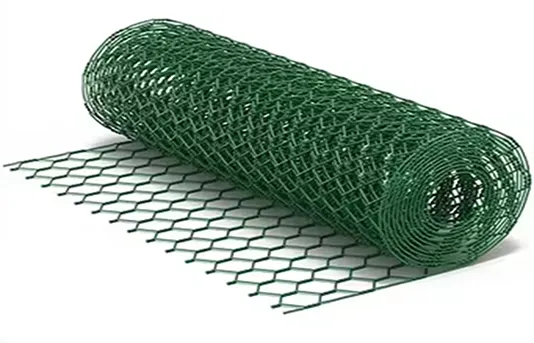-
 Phone:
Phone: -
 Email:
Email:

types of barbed wire
Understanding the Types of Barbed Wire
Barbed wire, an essential material in agricultural and security fencing, has a long history dating back to the late 19th century. Originally designed to keep cattle in and intruders out, it has since evolved into various forms suitable for different purposes. Each type of barbed wire is crafted to meet specific needs, making it important to understand these differences when choosing the appropriate kind for various applications.
1. Conventional Barbed Wire
The most common form of barbed wire consists of two strands twisted together with barbs placed at regular intervals. These barbs, usually sturdily constructed from metal, can deter animals and intruders. Conventional barbed wire is often used in agricultural settings to contain livestock and protect crops. While effective, this type can also pose risks to animals that become entangled, so it's essential to consider the specific context of its use.
2. Barbed Tape Concertina
Barbed tape concertina, also known as razorwire, features sharp-edged foil strips that are attached to a wire coil. This type of barbed wire is primarily used for security purposes, especially for high-security installations such as military bases, prisons, and sensitive government properties. The sharp edges of the foil can inflict serious injuries, making it an effective deterrent against intruders. It is also compact and easy to deploy, allowing for quick installation around perimeters.
3
. Electrified Barbed WireElectrified barbed wire combines the deterrent nature of barbed wire with the additional element of electrical shock. This type is often used in conjunction with traditional fencing to create an effective barrier against intruders. The electrical current runs through the strands of the wire, delivering a non-lethal shock upon contact. This serves as a significant deterrent, as the risk of injury can discourage any would-be trespassers. Electrified barbed wire is particularly popular in areas requiring heightened security, such as military installations, correctional facilities, and border fencing.
types of barbed wire

4. High-Tensile Barbed Wire
High-tensile barbed wire is made from stronger, thinner steel wire compared to traditional barbed wire. This increased strength allows for longer spans between fence posts, reducing costs without sacrificing quality. High-tensile barbed wire is ideal for agricultural applications, where it must withstand tension created by animals and environmental factors. Farmers often favor this type due to its durability and cost-effectiveness over time.
5. Vinyl-Coated Barbed Wire
For those seeking a less intrusive and visually appealing option, vinyl-coated barbed wire provides an excellent alternative. This type of barbed wire is coated with a layer of vinyl to offer protection against rust and corrosion while also presenting a more aesthetic appearance. This makes it favorable for residential properties or parks where visual appeal is important, without compromising on security. The vinyl coating also adds an extra layer of durability, further extending the lifespan of the wire.
6. Equestrian Barbed Wire
Equestrian barbed wire is specifically designed for horse fencing. Unlike standard barbed wire, which can be hazardous to horses, this type typically features rounded barbs that reduce the risk of injury. Equestrian barbed wire is often crafted with increased visibility, employing brightly colored coatings to alert horses and their owners to the presence of the fence. This makes it a safer option for horse owners looking to contain their animals in pastures while still maintaining an effective boundary.
Conclusion
Barbed wire serves various purposes in fencing, from agricultural to security applications. Understanding the different types available makes it easier to select the appropriate option for specific needs. Whether for containing livestock, safeguarding property, or ensuring the safety of both animals and humans, the right kind of barbed wire can offer an effective barrier when installed correctly. As with any fencing material, it’s crucial to weigh the benefits against potential risks, particularly concerning animal welfare and aesthetics, ensuring the chosen type aligns well with its intended use.
-
Wire Mesh for Every Need: A Practical SolutionNewsJul.25,2025
-
Steel Fences: Durable, Secure, and Stylish OptionsNewsJul.25,2025
-
Roll Top Fencing: A Smart Solution for Safety and SecurityNewsJul.25,2025
-
Cattle Farm Fencing Solutions for Maximum SecurityNewsJul.25,2025
-
Affordable Iron Binding Wire SolutionsNewsJul.25,2025
-
Affordable Galvanized Wire SolutionsNewsJul.25,2025
-
Wire Hanger Recycling IdeasNewsJul.25,2025








